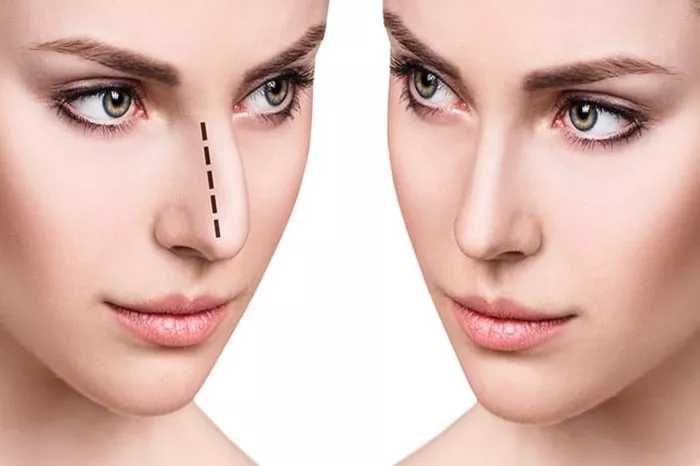In recent years, non-surgical nose jobs have gained popularity as a minimally invasive alternative to traditional rhinoplasty. Also known as liquid rhinoplasty or non-surgical rhinoplasty, this procedure involves the use of injectable fillers to reshape and contour the nose without the need for surgery. While non-surgical nose jobs offer several advantages, including quicker recovery times and lower costs compared to surgical options, many individuals considering this procedure wonder about its safety and long-term effects.
Understanding Non-Surgical Nose Jobs: How Do They Work?
Non-surgical nose jobs typically involve the injection of hyaluronic acid-based fillers such as Restylane or Juvederm into specific areas of the nose. These fillers can be used to smooth out bumps, enhance symmetry, lift the tip of the nose, or camouflage mild irregularities. The procedure is performed in an office setting and usually takes less than an hour to complete. Unlike surgical rhinoplasty, which requires anesthesia and involves incisions, non-surgical nose jobs are considered minimally invasive and involve little to no downtime.
The Safety of Non-Surgical Nose Jobs: What You Need to Know
Before undergoing any cosmetic procedure, it’s crucial to consider its safety implications. Non-surgical nose jobs are generally considered safe when performed by a qualified and experienced medical professional. However, like any cosmetic procedure, they carry some risks and potential side effects.
Potential Risks and Complications
One of the primary concerns associated with non-surgical nose jobs is the risk of vascular compromise. This occurs when filler is inadvertently injected into a blood vessel, potentially leading to skin necrosis (tissue death) or even blindness if the filler travels to the eyes. While these complications are rare, they underscore the importance of choosing a skilled injector who understands facial anatomy and injection techniques.
Other risks associated with non-surgical nose jobs include:
Infection: Although rare, infections can occur at the injection site.
Allergic reactions: Some individuals may be allergic to the filler material.
Asymmetry: Improper injection technique can result in asymmetrical results.
Filler migration: Fillers may shift position over time, altering the appearance of the nose.
Nodule formation: In some cases, lumps or nodules may develop at the injection site.
Choosing a Qualified Provider: Key Considerations
To minimize the risks associated with non-surgical nose jobs, it’s essential to choose a qualified provider with the appropriate training and experience. Consider the following factors when selecting a practitioner:
Credentials: Ensure that the provider is licensed to perform cosmetic procedures and has specific training in injectables.
Experience: Ask about the provider’s experience with non-surgical nose jobs and request before-and-after photos of previous patients.
Patient reviews: Read reviews and testimonials from other patients to gauge their satisfaction and experience.
Consultation: Schedule a consultation to discuss your goals, expectations, and any concerns you may have about the procedure.
See also: What Does A Nose Job Do?
The Consultation Process: What to Expect
During your consultation, the provider will assess your nasal anatomy, discuss your aesthetic goals, and explain the procedure in detail. They will also review your medical history to ensure you are a suitable candidate for a non-surgical nose job. This is an excellent opportunity to ask questions about the procedure, including its safety, potential risks, and expected outcomes.
Understanding the Limits of Non-Surgical Nose Jobs
While non-surgical nose jobs can achieve impressive results for certain aesthetic concerns, it’s essential to understand their limitations. Unlike surgical rhinoplasty, which can address structural issues such as deviated septums or significant nasal deformities, non-surgical options are primarily cosmetic and cannot reduce the size of the nose or correct major structural abnormalities.
Managing Expectations: Realistic Outcomes and Longevity
Managing expectations is crucial when considering any cosmetic procedure. The results of a non-surgical nose job are not permanent and typically last between 6 months to 2 years, depending on the type of filler used and individual metabolism. To maintain results, touch-up treatments are usually required periodically.
Post-Procedure Care and Follow-Up
After undergoing a non-surgical nose job, it’s essential to follow your provider’s post-procedure instructions carefully. This may include avoiding strenuous activities, refraining from touching or massaging the treated area, and using cold compresses to reduce swelling. Attend follow-up appointments as scheduled to monitor your progress and address any concerns.
Conclusion
In conclusion, non-surgical nose jobs can be a safe and effective option for individuals seeking to enhance the appearance of their nose without undergoing surgery. However, like any cosmetic procedure, it’s essential to weigh the benefits and risks carefully and choose a qualified provider to minimize potential complications. By understanding how non-surgical nose jobs work, considering their safety implications, and managing expectations for realistic outcomes, you can make an informed decision about whether this procedure is right for you.
If you’re considering a non-surgical nose job, schedule a consultation with a reputable provider to discuss your goals and concerns. Remember to ask questions, review before-and-after photos, and ensure you fully understand the procedure before proceeding. With proper research and guidance from a qualified professional, you can achieve the desired aesthetic improvements safely and effectively.
Related topics:
Nose Hit After Rhinoplasty: What To Do If It Happens?
Best 5 Natural Ways To Make Nose Smaller
Liquid Rhinoplasty: Is It Worth It?


